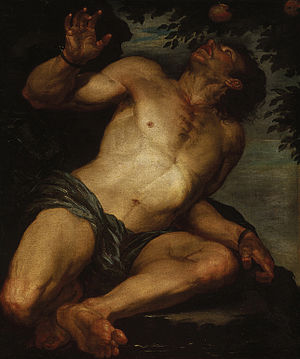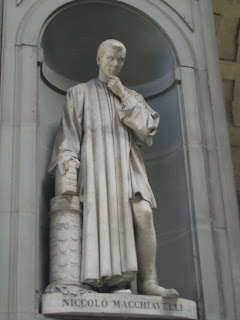 |
Image via Tom Häkkinen
One of Florence's innumerable beautiful streets |
or
How we nailed
Tuscany!
I am immensely pleased with our recent trip to Italy. Every moment was gold and we left with no regrets except perhaps how much we spent. Maybe, this is just Tuscany, and everyone feels like this after going there, but having had difficulties with trips to similarly “romantic” destinations, I would like to think that good planning and maybe a little luck also played a part and that is what this blog is going to be about.
My initial conclusion after the trip was that the little Tuscan town of
Lucca would be the greatest place in the universe if only the Lucchese spoke French and not Italian. I’m not sure now – as beautiful as French is, you can’t have the whole world speaking French – but nevertheless I’m not ready to say that Lucca beats
Avignon in Provençe. In either case, it’s a close call and Lucca is a big part of why our trip to Tuscany worked so well.
But first: some background
Italy is the home of the Romans and like most westerners who know some history I have a passion for that unassuming republic which became an Empire. Furthermore, when the Roman Empire collapsed and Europe fell into the dark ages, it was also small Italian city-states that gave birth to the flourishing of Arts and Sciences, inspired by Ancient Rome and Ancient Greece, known as the Renaissance. So I find it bizarre that when Italians have such a rich cultural background, particularly in what is considered “high culture”, that you’ll find t-shirts with “
Il Padrino” and a tommy-gun wielding Marlon Brandow on them in tourist shops in Italy. And likewise Italian cab-drivers in England and overseas will have the theme-song from the
Godfather tinnily ringing out as their mobile phone ringtone. Italians seem to have no idea how blessed they are with such a rich cultural history and yet for some unfathomable they identify mostly with an American gangster.
Perhaps for this reason I never had a great interest in travelling to Italy until I began studying French – that is, until the infectious enthusiasm of
Stendhal and
Dumas won me over to the land of the
Ghibelline and Guelph, of
condottieri and
cardinals. And so, I became fascinated with the birthplace of the renaissance –
Florence.
In travelling to Italy this world of renaissance splendour was the image of Italy that I had in the back of my head. And this passion for the Florentine Renaissance conditioned my expectations of Italy – travelling with my partner I wanted to arrive mysteriously like Edmond Dantès and to live like an aristocratic Italian count and countess and pretend to be liberal patrons of the arts and sciences.
To this end, art galleries and museums were in – but not too many! Nightlife was in – but not the cheap backpacker scene! Everything was to be sedate and relaxed and we were in search of “
la dolce vita” and we wanted to discover “
joie de vivre.”
So the Trip:
First after a close reading of my Rough Guides Italy and a careful study of some maps and the Trenitalia website I decided to take a punt on staying at the “
Palazzo Tucci” in Lucca rather than Florence. It turned out this was an inspired decision.
Whilst there are many hotels in Lucca, the “
Palazzo Tucci” a “
Residenza d’Epoca” or historic residence suited our aims perfectly. Its name is in no-way misleading, it essentially is a restored palace, presumably that of a noble Lucchese family. And although, it was more of a bed and breakfast than a four-star hotel – it was a bed and breakfast in a palace! The enormous ceilings with painted frescoes and massive “Juliet” balcony out the front really did make you feel like a Renaissance aristocrat.
Lucca is not far, only half an hour on the train, from Pisa and Pisa International Airport (Pisa Galileo Galilei). Regardless of whether you fly easyJet or British Airways, Pisa is a significantly cheaper route into Tuscany than Florence. And whilst you’re in Pisa you may as well take the opportunity to get some shots of the Leaning Tower of Pisa, although I have to admit that I don’t really like the building (it leans!).
 |
Image via Tom Häkkinen
Michelangelo's "David" in the Accademia di Belle Arti Firenze |
Likewise, Lucca is not too far from Florence for you to be able to visit an art gallery or two on a day-trip. Someone out there has probably choked on a pretzel and is in desperate need of the
Heimlich manoeuvre having just read “Florence” and “on a day trip” in the same sentence but I’ll give my reasons. Whilst Florence is so overwhelmingly beautiful that at times it feels like it is more packed with beautiful buildings and monuments than the entirety of a New World country like Australia put together – it can sometimes feel like it’s likewise packed with Australia’s national quota of tourists as well. You have to book admission into famous galleries like the
Uffizi and
Accademia days in advance. Every street corner seems to have a beautiful statue or fountain and every street is lined with beautiful Italian buildings – but likewise each street corner is crowded with tourists taking shots and buying
Gelatti as well. So for this reason I’m not sure if it’s possible to be able to visit the same Florence that Stendhal fell in love with. You can’t actually lose yourself in the magic and glamour of the city. It’s like an action film filled with glaring physically-impossible stunts – the “suspension of disbelief” keeps being broken by the inconsistent physical properties of a super-hero’s weapon or in the case of Florence by a mass of tourists cackling loudly with that raucous Miss-Magpie-laughter so peculiar to the English language.
This is why Lucca is such a perfect alternative. Lucca is a compact, walled, Tuscan town. From the top of the
Torre Delle ore the town looks like it has just stepped-out of a San Remo pasta ad. The city also seems quite well-heeled and it doesn’t have any of the rundown look that affects parts of Pisa. But most important of all – it has nothing of the feel of a “tourist destination”, there’s no McDonalds anywhere, no tacky tourists shops selling bottles of olive oil shaped like the tower of Pisa. You don’t have to worry about breaking the suspension of disbelief because there is no suspension of disbelief – you’re in it and it is authentic!
 Image via Wikipedia
Image via Wikipedia









